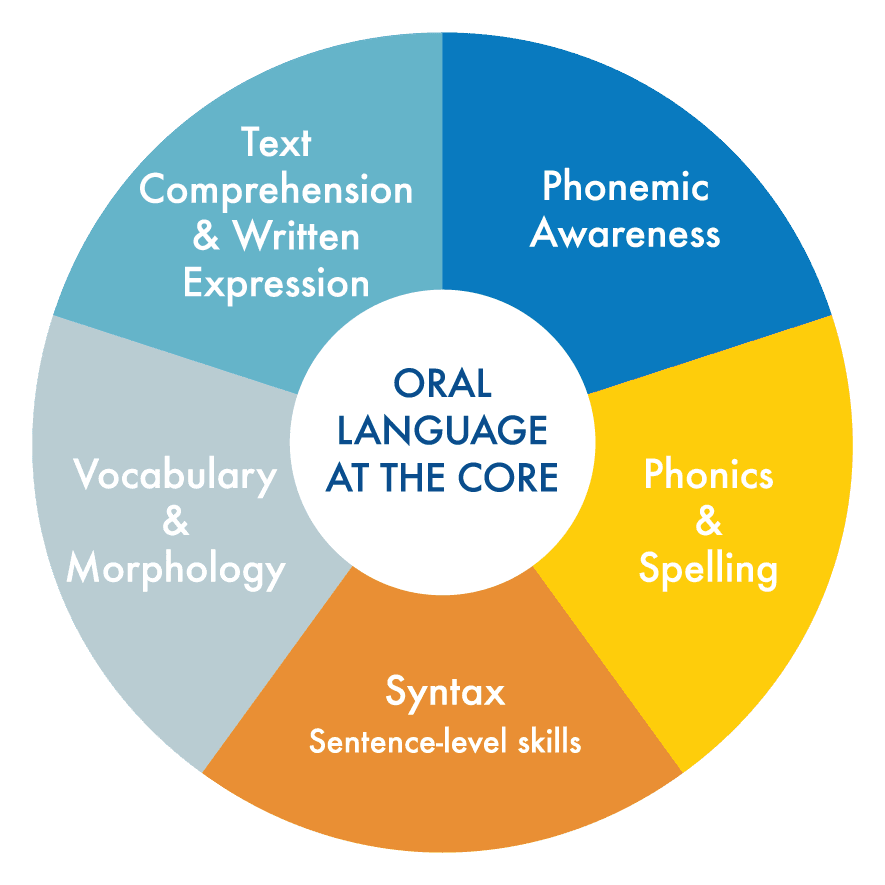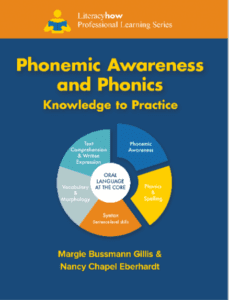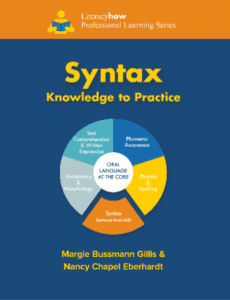
Oral Language
What is it?
Oral language (OL), sometimes called spoken language, includes speaking and listening—the ways that humans communicate with one another. OL skills provide the foundation for word reading and comprehension. They are at the heart of listening and reading comprehension, serving as a predictor for both.

Oral Language
What is it?
Oral language (OL), sometimes called spoken language, includes speaking and listening—the ways that humans communicate with one another. OL skills provide the foundation for word reading and comprehension. They are at the heart of listening and reading comprehension, serving as a predictor for both.
Frequently Asked Questions
Why are oral language skills important to literacy?
- Oral language is the foundation of written language
- Reading is a language-based skill. The relationship between oral language and reading is reciprocal (Kamhi & Catts, 1989) with each influencing the other to varying degrees as children progress through school.
- You must be able to understand language at an oral level in order to be expected to understand it at the text level.
- It’s difficult to learn to read words if you do not know what they mean
- Children with weak oral language skills are at risk for learning to read and comprehend.
What is Academic Language and how do I teach my students to use it in my classroom?
Academic Language, also referred as Academic or Standard English, is the language of the classroom and text. Students must have a command of Academic English in order to achieve in school. Teachers should be attuned to their own spoken language and model Academic English by creating spaces and providing opportunities where they would expect their students to use Academic English in both written and oral forms. With younger children, begin with explicit teaching and modeling. Show and Tell, and Circle Time are great places to expand sentences and provide models with Academic English. And keep in mind that all children–whether native English speakers or English Language Learners–receive the same practice and correction. For older children, consider starting with writing because the students have time to think about academic language, as well as time to revise. Then, after giving time to rehearse, ask students to make an oral presentation.
Tips for teachers and administrators
Teacher tip: Pair up Purposeful Partners
Teacher tip: teach Academic Language
Explicitly teach and practice “academic language,” the language used in the classroom and workplace, the language of text and assessments, and the language of academic success and power. Try these academic phrases.
Teacher tip: Use Formal Frames
Use this formal frame activity to help students produce competent verbal or written responses. These begin as sentence starters, but add critical grammatical and lexical clarification and support.
Tips for Principals
Read More to Learn more
- Beck, I.L., & McKeown, M.G. (2001). Text talk: Capturing the benefits of read aloud experiences for young children. The Reading Teacher 55, 10-35.
- Gatlin-Nash, B. (Summer 2020). Linguistic differences and learning to read for nonmainstream dialect speakers. Perspectives in Language and Literacy 46 (3), 28-32.
- Goldenberg, C. (Summer 2013). Unlocking the research on English learners. What we know—and don’t yet know—about effective instruction. American Educator 4-12, 38.
- Hirsch, E.D., Jr. (Spring 2003). Reading comprehension requires knowledge–of words and the world. American Educator 27 (1), 10-22, 28-29, 44.
- Komesidou, R., & Hogan, T.P. (Summer 2020). Preschool language precursors to later reading problems. Perspectives in Language and Literacy 46 (3), 37-41.
- Spear-Swerling, L. (Summer 2016). Listening comprehension, the Cinderella skill. Giving the neglected stepchild her due. Perspectives on Language and Literacy 42 (3), 9-15.
Literacy How Professional Learning Series
The Literacy How Professional Learning Series translates the latest reading research into how-to instruction. The Knowledge to Practice book Series—Phonemic Awareness and Phonics, Syntax, Vocabulary, and Comprehension—is based on the current and comprehensive Literacy How reading model. It draws upon the authors’ decades of expertise and experience working with thousands of general and special education teachers. The Series emphasizes Pre-K-3rd grade conceptual and skill development. Teachers of older emerging or struggling readers will also find these tools useful.

Phonemic Awareness and Phonics—the keys to breaking the code!

Syntax is essential—even for beginning readers!

Vocabulary knowledge is essential for effective comprehension!

Comprehension is the goal of reading—even for beginning readers!